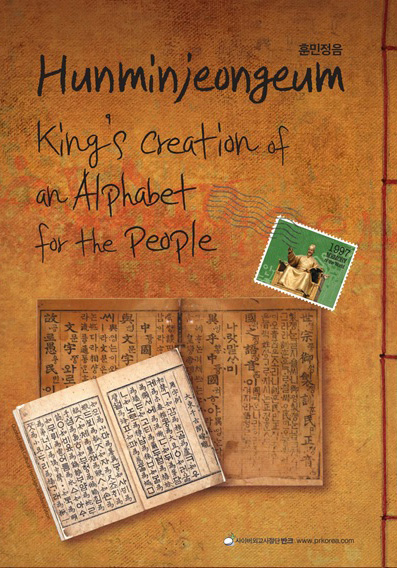
The Oldest Extant Book Printed with Movable Metal Type Jikji/ Designated in 2001
Evidence of important technological advancement in the world’s printing history
Jikji, short for Baekunhwasang Chorok Buljo Jikji Simche Yojol, is a book that was compiled from Buddhist scriptures by the monk Baekun Hwasang and printed with movable metal type by his disciples, Seokchan and Daljam during the late Goryeo Dynasty (918~1392). It was published at Heungdeok Temple in 1377, and became the oldest surviving book printed with movable metal type. The book was printed in two volumes, but only the second volume was found and is currently housed at the National Library of France. Jikji is recognized for its outstanding universal value because of its rarity and historical significance as the world’s oldest extant book printed with movable metal type, an invention that had a profound impact on human history.

Culmination of Extensive Documentation with Accuracy and Objectivity Joseon Wangjo Sillok (The Annals of the Joseon Dynasty)/ Designated in 1997
The world’s longest continuous record of a single dynasty, covering all 500 years of Joseon
Joseon Wangjo Sillok is a documentation of 472 years of the Joseon Dynasty (1392~1910), starting with the first king Taejo through the 25th king Cheoljong. It has great value for the study of East Asian history because it contains detailed accounts of Joseon’s politics, diplomacy, society, economy, literature, religion, astronomy, geography, and music, as well as the situations of neighboring countries, including China, Japan, and Mongolia. It is categorized according to the reign of each king. To protect its accuracy and objectivity, historians didn’t identify their names and compiled accounts after the previous king’s death. Even kings were not allowed to review the record. Joseon Wangjo Sillok is an important part of the world’s documentary heritage that represents historians’ rigorous efforts to pass down accurate and unbiased accounts of history.
King’s Creation of an Alphabet for the People Hunminjeongeum / Designated in 1997
The world’s only alphabet whose creator and purpose of creation are known
Hunminjeongeum, the original name of Hangeul, means proper sounds to instruct the people. Before its creation, Koreans used Chinese characters for their writing. Chinese characters did not adequately represent the sounds of the Korean language and were too difficult to learn for commoners, resulting in a high illiteracy rate. Understanding the troubles of commoners, King Sejong (1397~1450), the fourth ruler of Joseon, created the Korean native alphabet called Hunminjeongeum in 1443. It consisted of 28 letters that are easy to learn for anyone. Hunminjeongeum has outstanding universal value as the world’s only alphabet whose creator, date, purpose, and principles of creation were clearly documented.
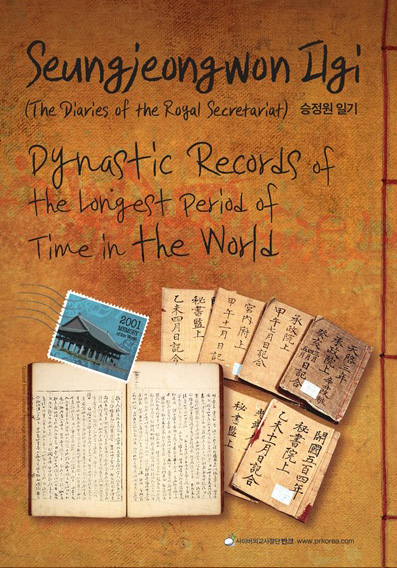 Dynastic Records of the Longest Period of Time in the World Seungjeongwon Ilgi (The Diaries of the Royal Secretariat)/ Designated in 2001
Dynastic Records of the Longest Period of Time in the World Seungjeongwon Ilgi (The Diaries of the Royal Secretariat)/ Designated in 2001
The world’s longest continuous record of kings’ daily life
Seungjeongwon Ilgi is a collection of the daily records of royal court affairs that was created and maintained by Seungjeongwon, the royal secretariat during the Joseon Dynasty. Royal secretaries kept detailed records of the king’s mood, his daily routines, and weather of the day. These diaries provide valuable historical records of climate change in the past 300 years in Northeast Asia. Writing began in the early Joseon, but about half were destroyed by fire during the Imjin War. The surviving portion includes 3,245 books written in 230 million characters that covered 288 years between March 1623 and August 1910. It is recognized for having the largest amount of authentic historic recordings in a single series.
Evidence of Cultural Victories through Patriotism Printing Woodblocks of the Tripitaka Koreana and Miscellaneous Buddhist Scriptures / Designated in 2007
The world’s most comprehensive Tripitaka, written in 52 million characters, in hope of protecting the nation
The Goryeo Daejanggyeong (Tripitaka Koreana) was created in a hope to protect the nation from Mongolian invasion by summoning the power of the Buddha. It is commonly known as the Palman Daejanggyeong, meaning Eighty Thousand Tripitaka in Korean, because Buddhist scriptures were carved onto 81,258 wooden printing blocks. The Daejanggyeong or the Tripitaka is a collection of Buddhist scriptures that consist of Gyeong, the Buddha’s teaching, Yul, rules for monks, and Ron, revered monks’ annotations. An additional 5,987 miscellaneous woodblocks were created to supplement the Daejanggyeong, and are currently stored at Haeinsa Temple. It was a large-scale national project that took 16 years and involved 50,000 people. The Goryeo Daejanggyeong is of particular historical value because Goryeo (918~1392) and China were the only two countries with the ability to create such work. Janggyeonggak Panjeon, the depository for the Daejanggyeong, is also registered as a UNESCO heritage site. Due to its scientific design, the Daejanggyeong is so well preserved that it enables clear printing to this day, which increases its value as documentary heritage.
 Essence of Accurate and Meticulous Record Keeping during Joseon Uigwe (The Royal Protocols of the Joseon Dynasty)/ Designated in 2007
Essence of Accurate and Meticulous Record Keeping during Joseon Uigwe (The Royal Protocols of the Joseon Dynasty)/ Designated in 2007
Detailed record of the Joseon Dynasty’s royal protocols for 500 years
The Uigwe is a collection of records that documented major royal ceremonies during Joseon. It consists of 3,895 books that illustrate entire procedures with documentation of work charts, participants, goods, and costs. It provides comprehensive and systematic representations of important national events and rituals of the time. Also, due to its categorization by topic and time period, it enables an observation of changes in royal ceremonies and the comparison of national ceremonies between East Asian countries at the time.
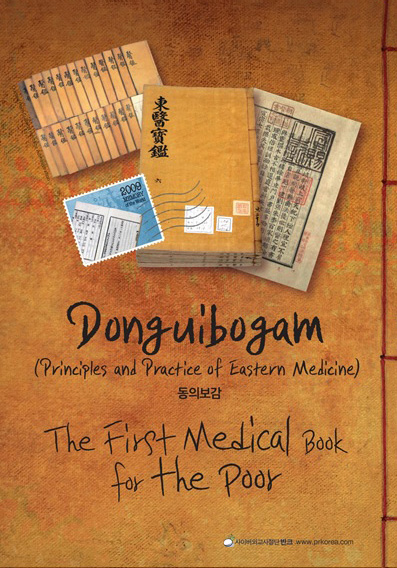 The First Medical Book for the Poor Donguibogam (Principles and Practice of Eastern Medicine)/ Designated in 2009
The First Medical Book for the Poor Donguibogam (Principles and Practice of Eastern Medicine)/ Designated in 2009
The most comprehensive medical book, compiling 2,000 years of Eastern medicine knowledge
Donguibogam means the theory and practices of Eastern medicine. It is an encyclopedic medical book compiled by the royal physician Heo Jun (1546~1615) and published in 1613. Heo spent 15 years on research and clinical trials to complete this book. He included preventive measures and treatments suited for Korean bodies, and provided the names of accessible herbs in Korean to help ordinary people. Donguibogam was distinguished from previous medical books that were under the dominant influence of Chinese medicine. It is an example that indicates Joseon’s interest in public health care in the 17th century. Donguibogam is still valuable literature about Eastern medicine for medical students.
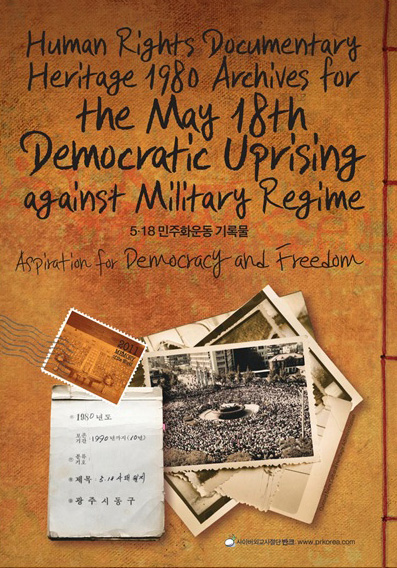 Aspiration for Democracy and Freedom Human Rights Documentary Heritage 1980 Archives for the May 18th Democratic Uprising against Military Regime/ Designated in 2011
Aspiration for Democracy and Freedom Human Rights Documentary Heritage 1980 Archives for the May 18th Democratic Uprising against Military Regime/ Designated in 2011
Human Rights Documentary Heritage 1980 Archives for the May 18th Democratic Uprising against Military Regime is a documentary heritage item that recorded people’s resistance to the oppressive government and its violence in order to bring democracy and defend human rights. The archives include documents, photos, and images that documented grassroots activities against the oppressive regime and compensation for victims. The May 18th Democratic Uprising had a profound impact on other Asian countries’ democratic and human rights movements. It still represents the value of democracy and democratic values, particularly fundamental human rights.
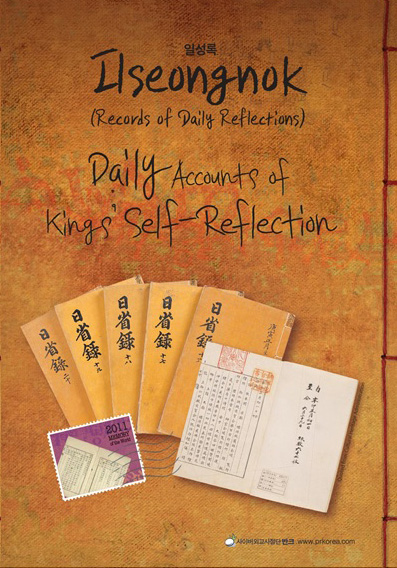 Daily Accounts of Kings’ Self-Reflection Ilseongnok (Records of Daily Reflections)/ Designated in 2011
Daily Accounts of Kings’ Self-Reflection Ilseongnok (Records of Daily Reflections)/ Designated in 2011
Joseon King’s diaries covering the period between 1760 and 1910
Ilseongnok means reflecting on the day, and it is the Joseon kings’ official records of state affairs. Kings wrote about their daily life and state affairs. Ilseongnok consists of 2,329 volumes that cover 151 years during the Joseon Dynasty. Beyond its value as a country’s historical data, Ilseongnok has an important use in understanding global historical changes because it includes the records of political and cultural exchanges between the East and the West from the 18th to 20th centuries.
 Daily Accounts of an Admiral’s Self-Reflection during a War Nanjung Ilgi (War Diary of Admiral Yi Sun-sin)/ Designated in 2013
Daily Accounts of an Admiral’s Self-Reflection during a War Nanjung Ilgi (War Diary of Admiral Yi Sun-sin)/ Designated in 2013
Seven years of diaries kept by an admiral during fierce battles
Nanjung Ilgi is a collection of seven volumes of a diary, one for each year, written by Admiral Yi Sun-sin (1545~1598) during the Imjin War (1592~1598). It is a rare record in which a military commander recorded battle situations and personal feelings on a daily basis during a war. It is a documentary heritage item that reflects a strong sense of responsibility to pass on lessons to later generations.
 Evidence of Hope to End Global Poverty Archives of Saemaul Undong (New Community Movement)/ Designated in 2013
Evidence of Hope to End Global Poverty Archives of Saemaul Undong (New Community Movement)/ Designated in 2013
Saemaul Undong (1970~1979), a model example of overcoming poverty
The Archives of Saemaul Undong include 22,000 pieces of governmental and non-governmental documents, pictures, and videos that recorded the process of modernization in 34,000 towns across Korea. Saemaul Undong made a significant contribution to Korea’s transition from one of the world’s poorest countries after the Korean War to one of the world’s top ten economies. It provides hope to developing countries in Asia and Africa that are struggling to overcome poverty and develop their economies.
 Broadcast “Finding Dispersed Families”/ Designated in 2015
Broadcast “Finding Dispersed Families”/ Designated in 2015
Records of the tragedies of 7.6 million separated families and their hope for peace
The Archives of the KBS Special Live Broadcast “Finding Dispersed Families” are the records of the moments of short reunion of dispersed families who have been separated since the territorial division after the Korean War. The archives consist of 20,522 items, including 463 video tapes of 453 hours and 45 minutes of broadcast for the 138 days between June 30 and November 14 in 1983, of the live KBS show “Finding Dispersed Families,” as well as producers’ journals and families’ applications. It is recognized for its outstanding universal value because it provides a unique collection of true stories that show aspirations for unification and peace.
 Dream for a Better World Confucian Printing Woodblocks / Designated in 2015
Dream for a Better World Confucian Printing Woodblocks / Designated in 2015
Culmination of collective intelligence work during the 500 years of the Joseon Dynasty
Confucian Printing Woodblocks consist of 64,226 wooden blocks that were created by local intellectuals and used to print 718 kinds of books between the 16th century and the mid-20th century. They cover a variety of areas, including politics, economy, society, and culture. Confucian Printing Woodblocks are important documentary heritage that reflects our constant pursuit to ‘become a moral person.


